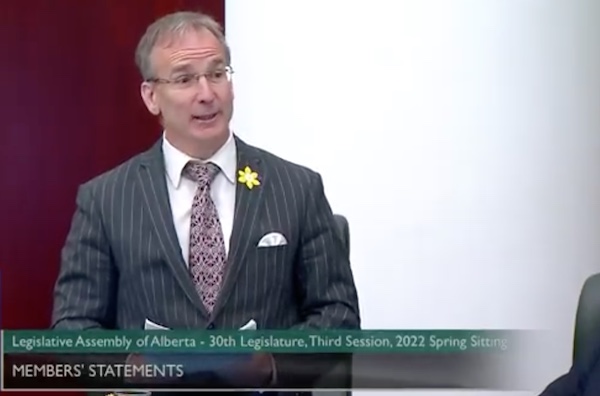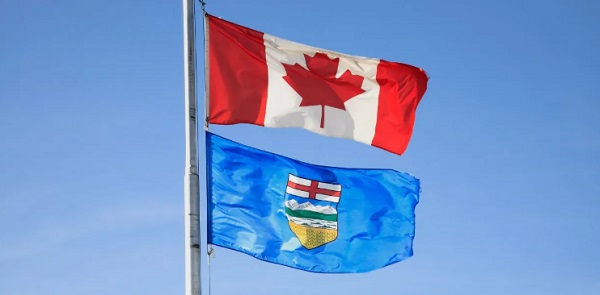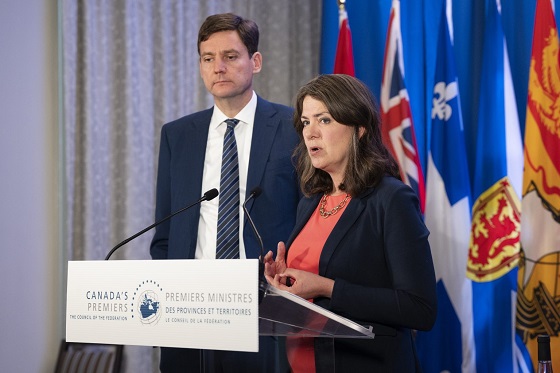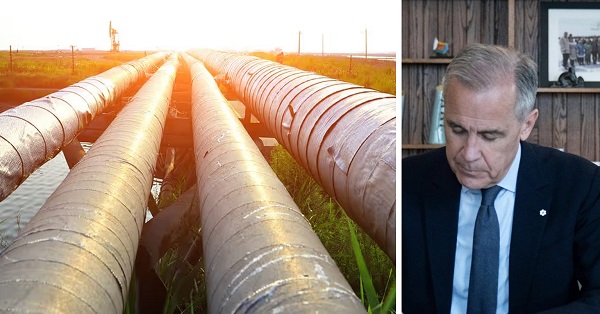Alberta
It’s time for the Alberta Sovereignty Act – Red Deer South MLA Jason Stephan

This article submitted by Red Deer South MLA Jason Stephan
THE ALBERTA SOVEREIGNTY ACT IS GOOD FOR ALBERTA
I supported the concept of the Alberta Sovereignty Act before the UCP leadership race. It was developed by the Free Alberta Strategy. I participated in their townhalls supporting their strategies, as did two of the UCP leadership candidates, Danielle Smith and Todd Loewen. Jason Kenney and his cabinet ministers did not.
What is the Alberta Sovereignty Act?
The Sovereignty Act affirms Alberta’s right to refuse and reject Federal Government actions or laws that intrude into provincial areas of jurisdiction or attack the interests of Alberta.
Ottawa recently released a “discussion paper” seeking to limit, or impose additional carbon taxes on, oil and gas development. This is not an isolated incident; this is a pattern of hostile behavior from Ottawa seeking to attack and take advantage of Alberta, holding it back.
Albertans should be aware that this discussion paper is likely a pretext, an excuse to either take more money from Alberta or prevent it from excelling ahead of other provinces.
Albertans should be aware that at any time Ottawa may leverage the Supreme Court of Canada decision permitting carbon taxes, overruling our Court of Appeal describing Ottawa’s carbon taxes as a “constitutional trojan horse”, to impose a targeted windfall or carbon tax on Alberta’s natural resources that discriminates and disproportionately punishes Alberta while sparing Ontario and Quebec from burden or harm.
The Supreme Court of Canada says carbon taxes are a tool that Ottawa has its disposal at any time to punish Alberta, yet under section 92A of the Constitution Act, Alberta has jurisdiction over its natural resources, not Ottawa.
The Alberta Sovereignty Act should be invoked to reject the “discussion paper” and tell Ottawa to leave Alberta and its constitutional jurisdiction alone.
The unfortunate truth is that Ottawa has made itself an unpredictable and hostile variable, a threat to the freedom and prosperity of Alberta businesses and families that should not be underestimated.
Alberta is compelled to protect itself.
Does the Establishment like the Alberta Sovereignty Act? No. Many Eastern politicians and their media pundits do not like the Alberta Sovereignty Act. It challenges the status quo they benefit under.
Their status quo has enabled a pattern of abuse and economic warfare on Alberta, disrespecting its jurisdiction over its resources, creating chaos and injecting commercial uncertainty, chasing away billions in private sector investments and thousands of Alberta jobs.
Albertans are becoming more aware that this is a rigged partnership. Alberta businesses and families give hundreds of millions more to Ottawa than they receive in return, with Ottawa using our money, not to benefit Alberta, but for political gain, primarily in Quebec, the structural welfare recipient under the partnership. Equalization is one of the devices that Ottawa uses for this purpose.
Albertans want change. Alberta held an equalization referendum. Ottawa ignored the result –to them Alberta is means to an end, they want our money. Strongly worded letters from Alberta politicians have accomplished nothing. It is time for less words and more actions.
Boundaries are reasonable and normal.
Boundaries are integral to adult relationships. The Alberta Sovereignty Act seeks to impose boundaries that Ottawa continually disrespects, to discriminate, attack, and force itself into Alberta’s constitutional jurisdictions.
Some of the UCP leadership candidates say the Alberta Sovereignty Act will produce chaos. They are wrong. It is a morally and fiscally bankrupt Ottawa, a trillion dollar plus fiscal train wreck, that is producing chaos. Ottawa is the risk that we can no longer afford, not a law that seeks to do something about it!
The Alberta Sovereignty Act is good for Alberta. Wisely applied it can help protect the Alberta Advantage, as the most attractive Canadian jurisdiction to start and grow a business, to work and raise our families. Alberta is a land of freedom and opportunity for us and our children. We must be vigilant to keep it that way.
The deadline to become a member of the United Conservative Party to vote in this leadership race is this Friday, August 12. We invite all Alberta conservatives to become a member of the party, to vote and have your say on who will be the next leader and Premier of Alberta!
You can buy a membership here, or check if your membership is up-to-date here.
Alberta
Carney forces Alberta to pay a steep price for the West Coast Pipeline MOU

From the Fraser Institute
The stiffer carbon tax will make Alberta’s oil sector more expensive and thus less competitive at a time when many analysts expect a surge in oil production. The costs of mandated carbon capture will similarly increase costs in the oilsands and make the province less cost competitive.
As we enter the final days of 2025, a “deal” has been struck between Carney government and the Alberta government over the province’s ability to produce and interprovincially transport its massive oil reserves (the world’s 4th-largest). The agreement is a step forward and likely a net positive for Alberta and its citizens. However, it’s not a second- or even third-best option, but rather a fourth-best option.
The agreement is deeply rooted in the development of a particular technology—the Pathways carbon capture, utilization and storage (CCUS) project, in exchange for relief from the counterproductive regulations and rules put in place by the Trudeau government. That relief, however, is attached to a requirement that Alberta commit to significant spending and support for Ottawa’s activist industrial policies. Also, on the critical issue of a new pipeline from Alberta to British Columbia’s coast, there are commitments but nothing approaching a guarantee.
Specifically, the agreement—or Memorandum of Understanding (MOU)—between the two parties gives Alberta exemptions from certain federal environmental laws and offers the prospect of a potential pathway to a new oil pipeline to the B.C. coast. The federal cap on greenhouse gas (GHG) emissions from the oil and gas sector will not be instituted; Alberta will be exempt from the federal “Clean Electricity Regulations”; a path to a million-barrel-per day pipeline to the BC coast for export to Asia will be facilitated and established as a priority of both governments, and the B.C. tanker ban may be adjusted to allow for limited oil transportation. Alberta’s energy sector will also likely gain some relief from the “greenwashing” speech controls emplaced by the Trudeau government.
In exchange, Alberta has agreed to implement a stricter (higher) industrial carbon-pricing regime; contribute to new infrastructure for electricity transmission to both B.C. and Saskatchewan; support through tax measures the building of a massive “sovereign” data centre; significantly increase collaboration and profit-sharing with Alberta’s Indigenous peoples; and support the massive multibillion-dollar Pathways project. Underpinning the entire MOU is an explicit agreement by Alberta with the federal government’s “net-zero 2050” GHG emissions agenda.
The MOU is probably good for Alberta and Canada’s oil industry. However, Alberta’s oil sector will be required to go to significantly greater—and much more expensive—lengths than it has in the past to meet the MOU’s conditions so Ottawa supports a west coast pipeline.
The stiffer carbon tax will make Alberta’s oil sector more expensive and thus less competitive at a time when many analysts expect a surge in oil production. The costs of mandated carbon capture will similarly increase costs in the oilsands and make the province less cost competitive. There’s additional complexity with respect to carbon capture since it’s very feasibility at the scale and time-frame stipulated in the MOU is questionable, as the historical experience with carbon capture, utilization and storage for storing GHG gases sustainably has not been promising.
These additional costs and requirements are why the agreement is the not the best possible solution. The ideal would have been for the federal government to genuinely review existing laws and regulations on a cost-benefit basis to help achieve its goal to become an “energy superpower.” If that had been done, the government would have eliminated a host of Trudeau-era regulations and laws, or at least massively overhauled them.
Instead, the Carney government, and now with the Alberta government, has chosen workarounds and special exemptions to the laws and regulations that still apply to everyone else.
Again, it’s very likely the MOU will benefit Alberta and the rest of the country economically. It’s no panacea, however, and will leave Alberta’s oil sector (and Alberta energy consumers) on the hook to pay more for the right to move its export products across Canada to reach other non-U.S. markets. It also forces Alberta to align itself with Ottawa’s activist industrial policy—picking winning and losing technologies in the oil-production marketplace, and cementing them in place for decades. A very mixed bag indeed.
Alberta
West Coast Pipeline MOU: A good first step, but project dead on arrival without Eby’s assent

The memorandum of understanding just signed by Prime Minister Mark Carney and Premier Danielle Smith shows that Ottawa is open to new pipelines, but these are unlikely to come to fruition without British Columbia Premier David Eby’s sign-off, warns the MEI.
“This marks a clear change to Ottawa’s long-standing hostility to pipelines, and is a significant step for Canadian energy,” says Gabriel Giguère, senior policy analyst at the MEI. “However, Premier Eby seems adamant that he’ll reject any such project, so unless he decides not to use his veto, a new pipeline will remain a pipedream.”
The memorandum of understanding paves the way for new pipeline projects to the West Coast of British Columbia. The agreement lays out the conditions under which such a pipeline could be deemed of national interest and thereby, under Bill C-5, circumvent the traditional federal assessment process.
Adjustments to the tanker ban will also be made in the event of such a project, but solely for the area around the pipeline.
The federal government has also agreed to replace the oil and gas emissions cap with a higher provincial industrial carbon tax, effective next spring.
Along with Premier Eby, several First Nations groups have repeatedly said they would reject any pipeline crossing through to the province’s coast.
Mr. Giguère points out that a broader issue remains unaddressed: investors continue to view Canada as a high-risk environment due to federal policies such as the Impact Assessment Act.
“Even if the regulatory conditions improve for one project, what is Ottawa doing about the long-term uncertainty that is plaguing future projects in most sectors?” asks the researcher. “This does not address the underlying reason Carney has to fast-track projects piecemeal in the first place.”
Last July, the MEI released a publication on how impact assessments should be fair, transparent, and swift for all projects, not just the few favoured by Ottawa under Bill C-5.
As of July, 20 projects were undergoing impact assessment review, with 12 in the second phase, five in the first phase, and three being assessed under BC’s substitution agreement. Not a single project is in the final stages of assessment.
In an Economic Note published this morning, the MEI highlights the importance of the North American energy market for Canada, with over $200 billion moving between Canada and the United States every year.
Total contributions to government coffers from the industry are substantial, with tens of billions of dollars collected in 2024-2025, including close to C$22 billion by Alberta alone.
“While it’s refreshing to see Ottawa and Alberta work collaboratively in supporting Canada’s energy sector, we need to be thinking long-term,” says Giguère. “Whether by political obstruction or regulatory drag, Canadians know that blocking investment in the oilpatch blocks investment in our shared prosperity.”
* * *
The MEI is an independent public policy think tank with offices in Montreal, Ottawa, and Calgary. Through its publications, media appearances, and advisory services to policymakers, the MEI stimulates public policy debate and reforms based on sound economics and entrepreneurship.
-

 Agriculture2 days ago
Agriculture2 days agoHealth Canada indefinitely pauses plan to sell unlabeled cloned meat after massive public backlash
-

 Energy19 hours ago
Energy19 hours agoPoilievre says West Coast Pipeline MOU is no guarantee
-

 Energy18 hours ago
Energy18 hours agoWill the New West Coast Pipeline MoU Lead to Results? Almost Certainly Not According to AI
-

 Alberta20 hours ago
Alberta20 hours agoWest Coast Pipeline MOU: A good first step, but project dead on arrival without Eby’s assent
-

 Carbon Tax23 hours ago
Carbon Tax23 hours agoCanadian energy policies undermine a century of North American integration
-

 Alberta18 hours ago
Alberta18 hours agoCarney forces Alberta to pay a steep price for the West Coast Pipeline MOU
-

 Alberta22 hours ago
Alberta22 hours agoAlberta and Ottawa ink landmark energy agreement
-

 Crime2 days ago
Crime2 days agoFBI Seizes $13-Million Mercedes Unicorn From Ryan Wedding’s Narco Network





